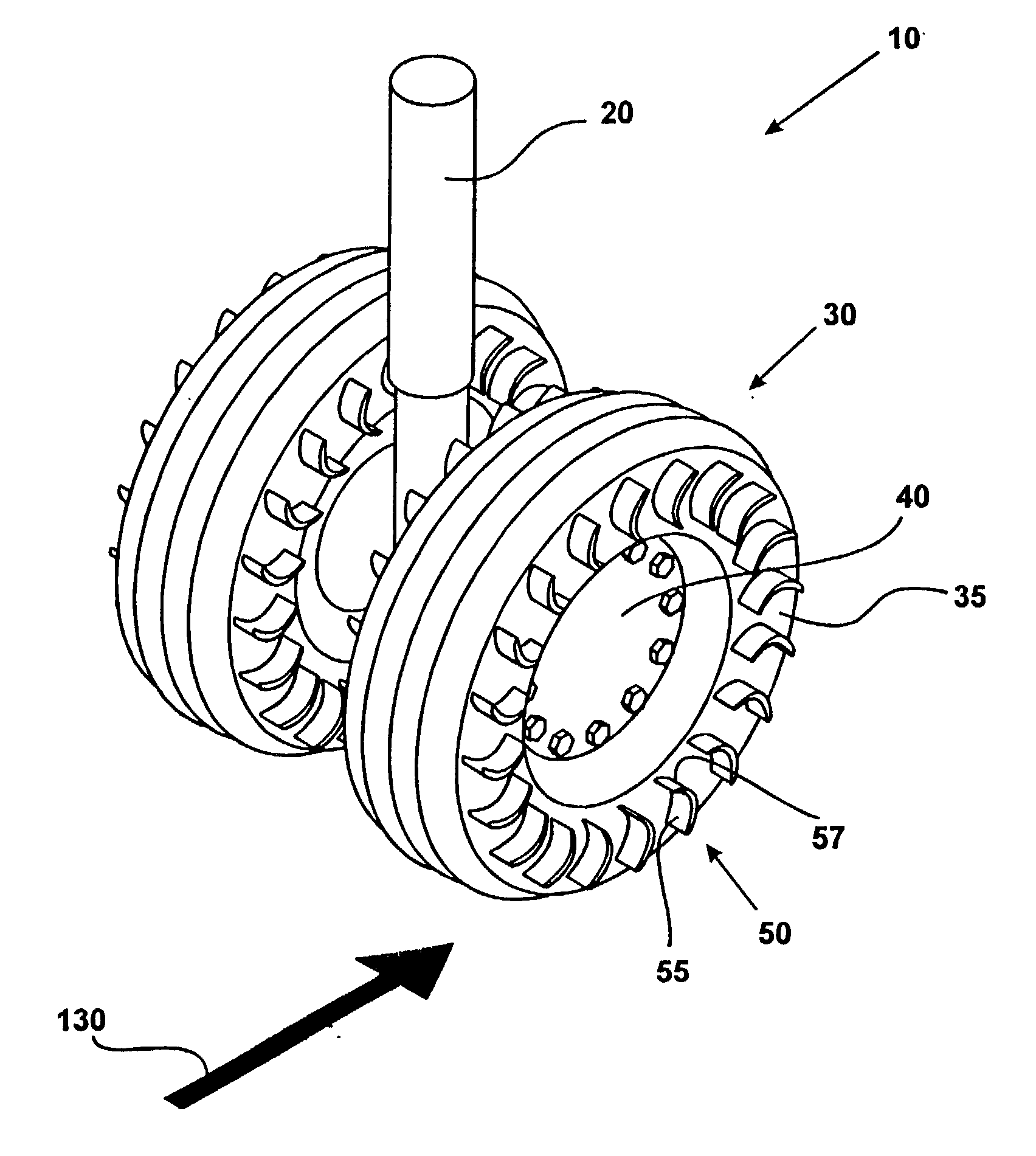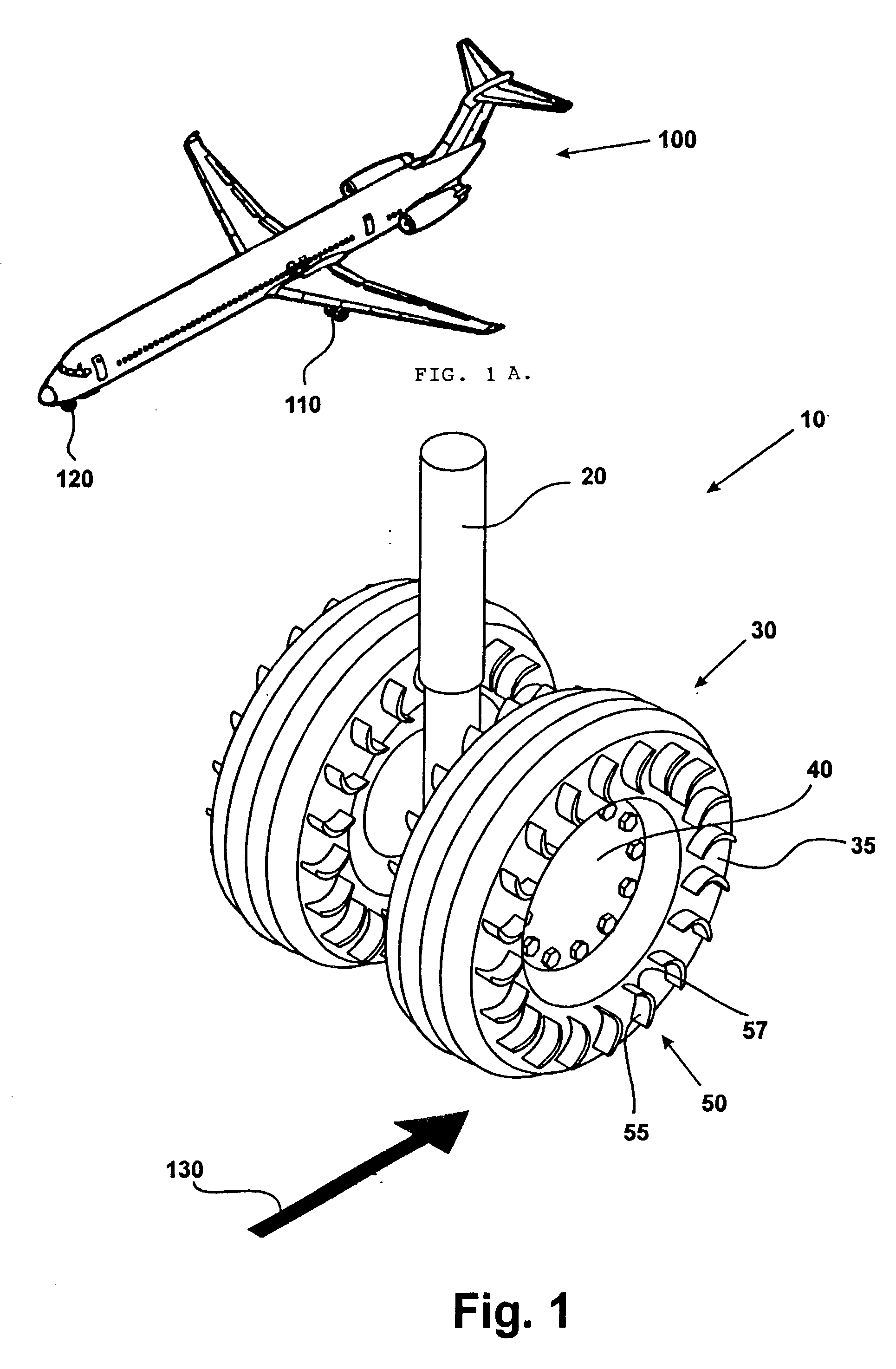Aircraft wheels having vanes
a technology of aircraft wheels and valences, which is applied in the direction of wheel arrangements, aircrafts, transportation and packaging, etc., can solve the problems of tire loss, tire rubber loss, and high stress on aircraft tires, and achieve the effect of reducing the risk of slipping, and reducing the safety of passengers
- Summary
- Abstract
- Description
- Claims
- Application Information
AI Technical Summary
Benefits of technology
Problems solved by technology
Method used
Image
Examples
Embodiment Construction
[0016] In accordance with the present invention, FIG. 1A shows a perspective view of a typical jet aircraft 100 utilizing main landing gear 110 and nose landing gear 120.
[0017] As shown in FIG. 1, the landing gear 120 has a strut 20, wheels 40, and tires 30 mounted on the wheels in a conventional manner. In the preferred embodiment, each tire 30 has a plurality of vanes 50 molded into its sidewall 35. The number, size, shape, and placement of the vanes will be determined by the particular aircraft and its landing characteristics.
[0018] As shown in FIG. 2, each vane 50 comprises a windward face 55 and a leeward face 57.
[0019] FIG. 3 shows a second embodiment of the present invention generally at 150. Rather than utilize a new tire, ring 155 is attached to wheel 40 by means of bolts 160. Ring 155 is made of aluminum alloy, titanium alloy, steel or other durable material, and comprises a plurality of vanes 250 around its perimeter. As previously stated, the final number, size, shape, a...
PUM
 Login to View More
Login to View More Abstract
Description
Claims
Application Information
 Login to View More
Login to View More - R&D
- Intellectual Property
- Life Sciences
- Materials
- Tech Scout
- Unparalleled Data Quality
- Higher Quality Content
- 60% Fewer Hallucinations
Browse by: Latest US Patents, China's latest patents, Technical Efficacy Thesaurus, Application Domain, Technology Topic, Popular Technical Reports.
© 2025 PatSnap. All rights reserved.Legal|Privacy policy|Modern Slavery Act Transparency Statement|Sitemap|About US| Contact US: help@patsnap.com



